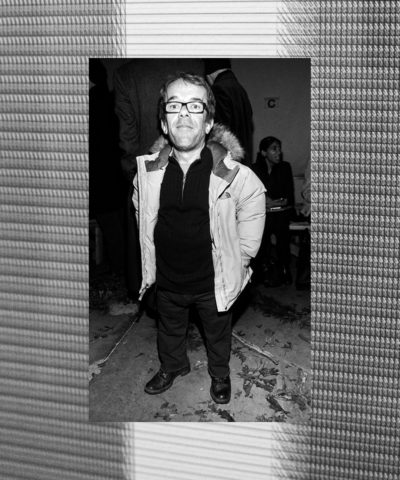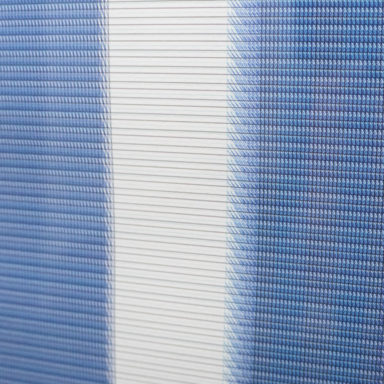
Basic Info
Name: Corban Walker
Country of Origin: IE
Website: http://www.corbanwalker.com/
Description
Corban Walker has something every artist needs: a critic trap, stretched taut across the ground floor of his studio in Brooklyn. A barrier of steel wires runs the width of Walker’s front room, from about chest height to the level of a tall man’s head; in a moment of distraction, this critic almost got his face egg-sliced. Walker, however, doesn’t have to worry about his own safety, because the bottom wire is set at what he calls “Corbanscale”—it barely grazes the top of his head as he passes back and forth underneath. Forty-five years ago, in Dublin, Walker was born with achondroplasia, the major cause of dwarfism. He is four feet tall. “The core of what I’ve been doing over the last 20 years is about this: my measure and the rule laid out for the average individual,” he says. And his art is about how that “rule” doesn’t fit him. He says that the wire piece, called “Latitude,” is possibly the most confrontational of his works about stature: “You could grate yourself [on it]—but I can’t.” But just about everything he’s made is a nod to his height, or at least to the number four, which describes it. A work in progress in his studio is a latticework cube made of plastic orange rods, designed so that there’s one natural viewpoint at Walker’s eye level and another at a more “standard” level—the confrontation of “Latitude” seeming to yield, in this piece, to conciliation. Walker’s most prestigious commission came in 2011, when he filled the Irish pavilion at the Venice Biennale with a precarious pile of 176 cubes built from stainless-steel rods, stacked almost to the rafters. The heap was inspired, Walker says, by the 2008 financial collapse and the unstable state of the global economy. But the number of cubes is, of course, a multiple of four, and the pavilion’s windows featured geometric cutouts based on the 4-foot Corbanscale. The Venice works, like everything Walker makes, have aesthetic roots in elegant 1960s minimalism, but they matter now because they update that tradition and anchor it in life as it’s lived. “He’s using his rule and his scale to find his own narrative within that minimalist history,” says Eamonn Maxwell, the Irish curator who organized the Venice project. “He plays with his height, but can also ignore it.” Walker, who sports Coke-bottle glasses and a scruffy red beard, says that most people take the size of the built world for granted, whereas he’s always had to deal with its fit. His father was a well-known Irish architect who’d worked under Le Corbusier and Mies van der Rohe, modernist masters who conceived their buildings around the height of a six-foot “able-bodied man,” Walker says. That same conception governed the art-filled house his father built for his family—“a concrete ceiling with four glass walls”—the only concession to a diminutive child being a plenitude of stepstools. “They also put in a second doorbell that was lower,” Walker remembers, laughing. His stature, Walker says, “is certainly a normal part of who I am, and a normal part of how other people engage with me … I work with it, but I try to make it something that doesn’t control my life.”

